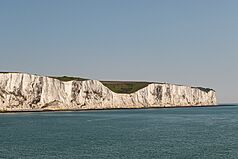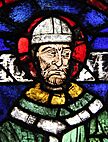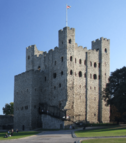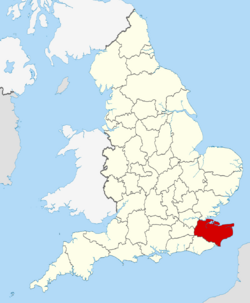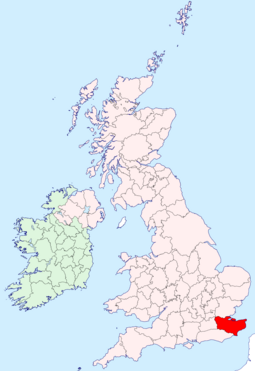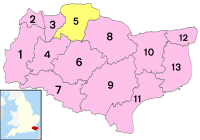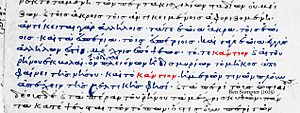Kent facts for kids
Quick facts for kids
Kent
|
|||||||||||||||||||||||||||||||||||||||||||||||||||||||
|---|---|---|---|---|---|---|---|---|---|---|---|---|---|---|---|---|---|---|---|---|---|---|---|---|---|---|---|---|---|---|---|---|---|---|---|---|---|---|---|---|---|---|---|---|---|---|---|---|---|---|---|---|---|---|---|
|
The White Cliffs of Dover, a stained glass window showing Thomas Becket in Canterbury Cathedral, and Rochester Castle
|
|||||||||||||||||||||||||||||||||||||||||||||||||||||||
| Motto(s):
Invicta
|
|||||||||||||||||||||||||||||||||||||||||||||||||||||||
| Sovereign state | United Kingdom | ||||||||||||||||||||||||||||||||||||||||||||||||||||||
| Constituent country | England | ||||||||||||||||||||||||||||||||||||||||||||||||||||||
| Region | South East | ||||||||||||||||||||||||||||||||||||||||||||||||||||||
| Established | Ancient | ||||||||||||||||||||||||||||||||||||||||||||||||||||||
| Time zone | UTC±00:00 (Greenwich Mean Time) | ||||||||||||||||||||||||||||||||||||||||||||||||||||||
| • Summer (DST) | UTC+01:00 (British Summer Time) | ||||||||||||||||||||||||||||||||||||||||||||||||||||||
| Members of Parliament | List of MPs | ||||||||||||||||||||||||||||||||||||||||||||||||||||||
| Police | Kent Police | ||||||||||||||||||||||||||||||||||||||||||||||||||||||
| Largest town | Maidstone | ||||||||||||||||||||||||||||||||||||||||||||||||||||||
|
|||||||||||||||||||||||||||||||||||||||||||||||||||||||
Kent is a county in the corner of South East England. It is surrounded by Greater London, Surrey, and East Sussex. Across the water, it faces Essex to the north and France to the south-east across the Strait of Dover. The county town is Maidstone.
Because of its location between London and mainland Europe, Kent has been a key entry point to Britain for thousands of years. It is famous for its beautiful countryside, fruit orchards, and hop gardens, which has earned it the nickname "the Garden of England." Kent is also known for the stunning White Cliffs of Dover, which are a famous symbol of Great Britain.
The city of Canterbury is in Kent and is home to Canterbury Cathedral, an important centre for Christianity in England. The county has a rich history, with many castles like Dover Castle and Rochester Castle that were built to defend the country.
Contents
Name
The name 'Kent' is very old, coming from a Celtic word. It is one of the oldest place names still used in the British Isles. It was first written down by the Greek explorer Pytheas over 2,300 years ago.
The name probably means 'coastal district' or 'land on the edge,' which makes sense because Kent is on the coast. In Roman times, it was called Cantium, and the Anglo-Saxons called it Cent.
History
Early History
People have lived in Kent since the Stone Age. Tools and even a Neanderthal skull have been found in places like Swanscombe. During the Neolithic period, people built large stone monuments called the Medway megaliths. Later, during the Iron Age, a Celtic tribe called the Cantiaci lived here.
When the Roman general Julius Caesar came to Britain in 51 BC, he wrote that the people of Kent were "by far the most civilised inhabitants of Britain."
Anglo-Saxons and Christianity
After the Romans left Britain around 410 AD, tribes from Europe, like the Jutes, settled in Kent. They brought their language, which grew into Old English. The area became the Kingdom of Kent.
In 597 AD, a missionary named Augustine arrived from Rome. He was sent by Pope Gregory I to bring Christianity to England. He converted the pagan King Æthelberht of Kent and became the first Archbishop of Canterbury. This made Canterbury the centre of Christianity in England, which it still is today.
Medieval Kent
In the 11th century, William the Conqueror invaded England. The people of Kent resisted so strongly that they were given special rights. They adopted the motto Invicta, which is Latin for "unconquered."
During the Middle Ages, Kent was part of several important rebellions. These included the Peasants' Revolt in 1381, led by Wat Tyler, and Jack Cade's rebellion in 1450. These were protests by ordinary people against unfair taxes and bad government.
Ships and Forts
Because Kent is so close to France, it was always important for England's defence. The Royal Navy began using the River Medway in the 1500s, and a large dockyard was built at Chatham to build and repair warships.
Many forts were built along the coast to protect against invasion, especially during wars with the Netherlands and France. Dover Castle is one of the most famous and has been called the "key of England" because it was so important for defence.
Modern History
During the Second World War, the skies over Kent were the main location for the Battle of Britain, where British pilots fought against the German air force. Because it was so close to France, thousands of flying bombs, called "Doodlebugs," were fired at London and Kent.
Over the years, Kent's borders have changed. In 1965, some towns in north-west Kent became part of London, forming the boroughs of Bromley and Bexley. In 1998, the Medway towns, including Rochester and Chatham, formed their own local government area called Medway.
Geography
Kent is in the south-eastern corner of England. It is bordered by the sea to the north and south. France is only 21 miles (34 km) away across the English Channel.
The landscape of Kent is made of long hills and valleys. The most famous hills are the North Downs, a ridge of chalk that runs across the county. Where these hills meet the sea, they form the spectacular White Cliffs of Dover.
The area is known as "the Garden of England" because its soil is great for growing fruit. You can see many apple and cherry orchards, as well as fields of hops used to make beer. The traditional buildings for drying hops, called oasts, are a common sight in the countryside.
The main river in Kent is the River Medway, which flows through Maidstone and Rochester. Another important river is the River Stour, which flows through Canterbury.
Climate
Kent is one of the warmest parts of Britain. In August 2003, the temperature in Brogdale, near Faversham, reached 38.5°C (101.3°F). At the time, this was the highest temperature ever recorded in the United Kingdom.
| Climate data for Wye, England (1981–2010) data | |||||||||||||
|---|---|---|---|---|---|---|---|---|---|---|---|---|---|
| Month | Jan | Feb | Mar | Apr | May | Jun | Jul | Aug | Sep | Oct | Nov | Dec | Year |
| Mean daily maximum °C (°F) | 7.4 (45.3) |
7.4 (45.3) |
10.3 (50.5) |
12.9 (55.2) |
16.3 (61.3) |
19.3 (66.7) |
21.8 (71.2) |
21.9 (71.4) |
18.8 (65.8) |
14.8 (58.6) |
10.7 (51.3) |
7.8 (46.0) |
14.1 (57.4) |
| Daily mean °C (°F) | 4.5 (40.1) |
4.4 (39.9) |
6.7 (44.1) |
8.7 (47.7) |
12.0 (53.6) |
14.7 (58.5) |
17.2 (63.0) |
17.2 (63.0) |
14.6 (58.3) |
11.2 (52.2) |
7.5 (45.5) |
5.0 (41.0) |
10.3 (50.5) |
| Mean daily minimum °C (°F) | 1.7 (35.1) |
1.5 (34.7) |
3.1 (37.6) |
4.6 (40.3) |
7.7 (45.9) |
10.2 (50.4) |
12.6 (54.7) |
12.5 (54.5) |
10.5 (50.9) |
7.7 (45.9) |
4.3 (39.7) |
2.3 (36.1) |
6.6 (43.9) |
| Average precipitation mm (inches) | 71.4 (2.81) |
50.3 (1.98) |
48.9 (1.93) |
49.1 (1.93) |
50.7 (2.00) |
48.8 (1.92) |
48.2 (1.90) |
61.8 (2.43) |
55.1 (2.17) |
93.0 (3.66) |
83.5 (3.29) |
80.3 (3.16) |
741.1 (29.18) |
| Average rainy days | 12.7 | 9.6 | 9.5 | 9.0 | 9.2 | 7.9 | 7.7 | 7.4 | 8.1 | 12.1 | 12.0 | 12.2 | 117.4 |
| Mean monthly sunshine hours | 59.6 | 79.6 | 115.3 | 174.1 | 205.2 | 200.1 | 213.7 | 210.3 | 152.2 | 118.2 | 71.9 | 49.8 | 1,649.9 |
How Kent is Governed
Most of Kent is run by Kent County Council, which is based in Maidstone, and twelve smaller district councils. The Medway towns have their own council, called Medway Council. These councils are responsible for local services like schools, roads, and libraries.
Kent also elects Members of Parliament (MPs) to represent the county in the House of Commons in London. For a long time, most of Kent's MPs were from the Conservative Party. However, in the 2024 general election, the Labour Party won the most seats in the county.
Culture
Famous Buildings
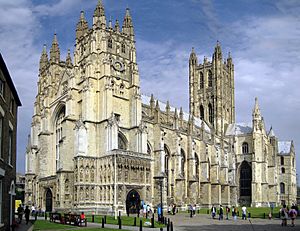
Kent has many historic buildings. The most famous is Canterbury Cathedral, which was founded in 598 AD. It is a beautiful example of different styles of architecture from over the centuries. Rochester Cathedral is England's second-oldest cathedral.
The county is also famous for its castles, such as Dover Castle, Rochester Castle, and Deal Castle. These were built to defend England from invaders.
Kent has its own special types of buildings, like the oast house. These are round buildings with a cone-shaped roof, which were used for drying hops. Many have now been turned into homes.
Literature
Kent has inspired many famous writers. Geoffrey Chaucer's famous book, The Canterbury Tales, is about a group of pilgrims travelling to Canterbury.
Charles Dickens, one of the most famous English novelists, lived and worked in Kent. He featured places like Rochester, Chatham, and the nearby marshes in many of his books, including Great Expectations and The Pickwick Papers.
Art
The painter J. M. W. Turner loved the seaside town of Margate and painted many famous seascapes inspired by the Kent coast. The artist Tracey Emin also grew up in Margate.
Kent was also the home of Mary Tourtel, who created the famous children's book character, Rupert Bear.
Transport
Roads and Railways
Kent is very well connected by roads and railways. The M2, M20, and M25 motorways run through the county, linking it to London and the rest of the country.
The Channel Tunnel connects Folkestone in Kent with Coquelles in France, allowing cars and trains to travel under the sea. The High Speed 1 railway line runs through Kent, with fast trains connecting London to Paris and Brussels. This line also provides quick services to towns within Kent.
Ports and Ferries
The Port of Dover is one of the busiest passenger ports in the world, with ferries travelling to and from France all day. The port is also very important for trade, with thousands of lorries passing through it every day.
Education
Kent is one of the few areas in Britain that still has a selective education system. This means that at age 11, students take an exam called the eleven-plus. Based on their results, they go to either a grammar school or a secondary modern school.
There are four universities in Kent: Canterbury Christ Church University, the University of Kent, the University of Greenwich, and the University for the Creative Arts (UCA).
Sport
- Football: The highest-ranked football team in Kent is Gillingham FC, who play in League Two. Other major non-league clubs include Ebbsfleet United and Maidstone United.
- Cricket: Kent County Cricket Club is one of England's major cricket teams. Cricket is a very popular sport in Kent, and some people believe the game may have started here.
- Motorsport: The Brands Hatch racing circuit near Swanley is a world-famous track. It has hosted many major races, including the British Grand Prix.
See also
 In Spanish: Kent para niños
In Spanish: Kent para niños


